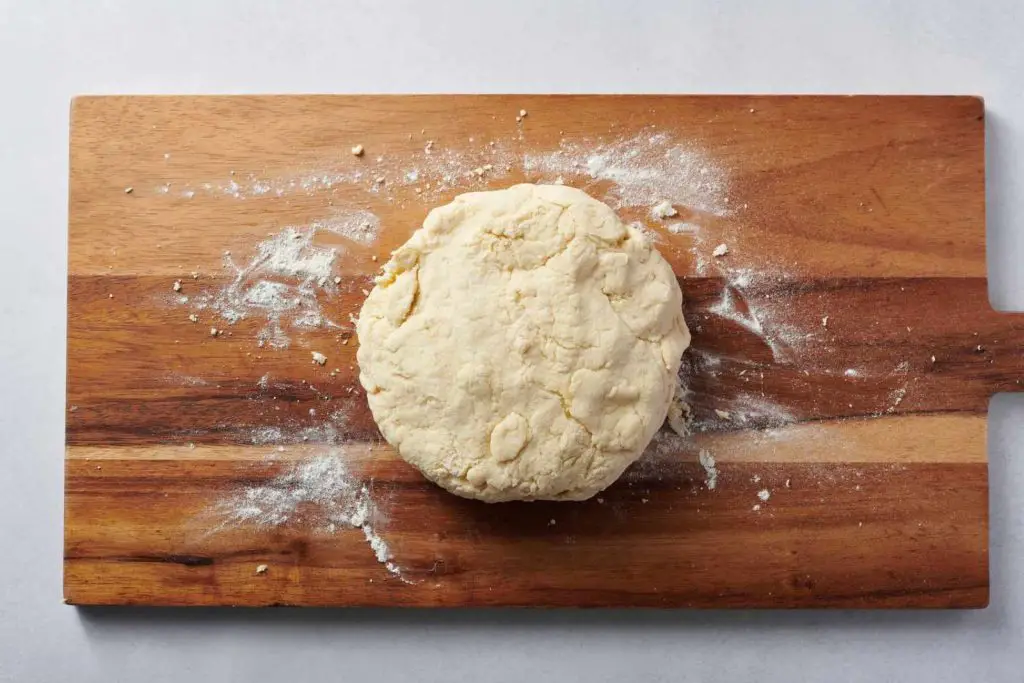
Baguettes, with their iconic long and slender shape, are a beloved type of French bread known for their crispy crust and soft, airy interior. Whether you’ve baked a fresh batch or have leftovers from a bakery, freezing baguettes can be a practical solution to prevent wastage and ensure a constant supply of delicious bread. In this article, we will explore the steps to properly freeze baguettes, allowing you to enjoy their delightful taste and texture even after they have been stored in the freezer.
Here’s a guide on how to freeze baguettes effectively:
- Step 1: Allow the baguette to cool completely
- Step 2: Decide on portioning or freezing the whole baguette
- Step 3: Wrap each portion or the whole baguette tightly in plastic wrap
- Step 4: Wrap the plastic-wrapped baguette in aluminum foil
- Step 5: Label and date the package
- Step 6: Place the wrapped baguette in the freezer
Step 1: Allow the baguette to cool completely
After baking or purchasing a baguette, it’s crucial to allow it to cool down completely before freezing. This step is essential to maintain the quality and texture of the baguette during the freezing process.
When a baguette comes out of the oven, it retains residual heat and moisture. If you were to wrap and freeze it immediately, the trapped heat and moisture could lead to condensation inside the packaging. This condensation can cause the baguette to become soggy and affect its taste and texture once thawed.
By allowing the baguette to cool at room temperature for about an hour, you allow excess heat and moisture to dissipate. This helps in achieving a drier surface, reducing the chances of condensation formation when the baguette is wrapped for freezing.
Cooling the baguette also allows the internal temperature to even out, ensuring that it freezes uniformly. This helps in preserving the baguette’s structure and preventing any potential texture changes that may occur if it is frozen while still warm.
Step 2: Decide on portioning or freezing the whole baguette
When freezing a baguette, you have the option to either freeze it as a whole or portion it into smaller servings. Your decision may depend on your preferences and how you plan to use the baguette after thawing.
- Freezing the whole baguette:
If you anticipate using the entire baguette in one go or prefer to have the flexibility of using it for various purposes, freezing the baguette as a whole is a suitable choice. It allows you to thaw the entire baguette and use it for sandwiches, garlic bread, or other recipes that require a full baguette.
- Portioning the baguette:
Portioning the baguette before freezing is convenient if you prefer having individual servings readily available. Slicing the baguette into appropriate portions, such as sandwich-sized slices or smaller pieces, allows you to thaw only the amount you need at a given time. This can be beneficial if you have limited freezer space or want to enjoy smaller portions without thawing the entire baguette.
Consider your typical usage and serving preferences when deciding how to freeze the baguette. If you often find yourself needing smaller portions, portioning the baguette before freezing can save you time and effort when it comes to thawing and using the bread. On the other hand, if you frequently use whole baguettes or prefer the flexibility of having the entire loaf available, freezing it as a whole is the way to go.
Can I freeze baguettes that have been pre-sliced from the bakery?
It is possible to freeze baguettes that have been pre-sliced from the bakery. However, it’s important to note that pre-sliced baguettes may dry out more quickly in the freezer compared to whole baguettes. To minimize moisture loss, wrap the pre-sliced baguette tightly in plastic wrap and then place it in an airtight freezer bag or container. It’s recommended to consume the pre-sliced baguettes within a shorter period after thawing for the best taste and texture.
Step 3: Wrap each portion or the whole baguette tightly in plastic wrap
To ensure that your frozen baguette retains its freshness and texture, it’s important to wrap each portion or the whole baguette tightly in plastic wrap. This step serves two primary purposes: protecting the baguette from freezer burn and maintaining its moisture.
- Protection from freezer burn:
Freezer burn occurs when food is exposed to air inside the freezer, causing dehydration and oxidation. This can result in the baguette losing its quality and developing a dry, unpleasant taste. By tightly wrapping the baguette in plastic wrap, you create a protective barrier that minimizes air exposure, reducing the risk of freezer burn. The plastic wrap acts as a shield, keeping the baguette’s surface protected and preserving its flavor.
- Retaining moisture:
Baguettes are known for their crisp crust and soft interior, and proper moisture retention is crucial to maintaining their desirable texture. Wrapping the baguette tightly in plastic wrap helps seal in the moisture, preventing it from escaping and keeping the bread from becoming dry during freezing. This helps ensure that when you thaw and reheat the baguette, it retains its delicious and moist qualities.
When wrapping the baguette, start by tightly wrapping the plastic wrap from one end to the other, ensuring that there are no exposed areas. Pay attention to the ends of the baguette to prevent them from drying out. The goal is to create a snug and airtight seal that protects the baguette throughout its time in the freezer.
Step 4: Wrap the plastic-wrapped baguette in aluminum foil
Wrapping the plastic-wrapped baguette in aluminum foil is an additional step that adds extra protection against freezer burn and helps maintain the baguette’s texture, flavor, and crispness during freezing. The aluminum foil serves as a shield against cold air and provides insulation.
- Protection against freezer burn:
Freezer burn occurs when food is exposed to air and moisture in the freezer, causing it to dehydrate and lose quality. By wrapping the plastic-wrapped baguette in aluminum foil, you create an additional barrier that helps minimize air contact. This reduces the risk of freezer burn, ensuring that the baguette retains its taste and freshness.
- Preserving texture, flavor, and crispness:
Baguettes are known for their crispy crust, and maintaining this texture is key to enjoying them after freezing. Wrapping the baguette in aluminum foil helps to preserve its crispness by acting as a protective layer against moisture and temperature fluctuations. The foil helps insulate the baguette, preventing it from becoming too moist or losing its crisp exterior during freezing.
Furthermore, the aluminum foil helps to preserve the baguette’s flavor by sealing in its natural aromas and preventing any unwanted odors from permeating the bread. This ensures that when you thaw and reheat the baguette, it still tastes as delicious as when it was first baked.
When wrapping the baguette in aluminum foil, make sure to cover it completely, ensuring there are no exposed areas. The tight seal created by the foil will help maintain the baguette’s quality throughout its time in the freezer.
Step 5: Label and date the package
Labeling and dating the package containing the wrapped baguette is an important step in freezing baguettes. It allows you to keep track of the baguette’s freezing date, ensuring that you can prioritize the consumption of older baguettes and maintain their quality.
- Tracking freezing time:
Over time, even properly frozen baguettes may experience some degradation in taste and texture. By labeling and dating the package, you can easily identify how long the baguette has been in the freezer. This helps you make informed decisions about which baguette to thaw and consume first, reducing the chance of any baguettes being forgotten and staying in the freezer for too long.
- Prioritizing consumption:
The quality of frozen baguettes may gradually decline the longer they are stored. By having the date clearly marked on the package, you can prioritize consuming the older baguettes before moving on to more recently frozen ones. This ensures that you enjoy the baguettes at their best and minimizes the potential for waste.
When labeling the package, write the date of freezing using a marker or a label sticker that adheres well to the packaging material. Place the label in a visible location to easily identify the freezing date when you retrieve the baguette from the freezer.
Step 6: Place the wrapped baguette in the freezer
After properly wrapping and labeling the baguette, the final step is to place it in the freezer for long-term storage. It’s important to handle the wrapped baguette with care to prevent damage and ensure it retains its shape and quality during freezing.
- Choose a suitable spot in the freezer:
Select a spot in your freezer where the baguette will be less likely to get crushed or damaged by other items. Avoid placing heavy items on top of the baguette or in a location where it may be bumped or jostled frequently. Ideally, choose a flat surface or a dedicated space that can accommodate the baguette’s length without any obstructions.
- Prevent squishing or shape distortion:
Take care to position the wrapped baguette in the freezer in a way that it maintains its shape. Lay it flat or vertically, depending on the available space and the size of the baguette. Avoid putting any pressure on the baguette that could cause it to become squished or lose its characteristic elongated shape. Proper placement helps preserve the baguette’s appearance and structure, ensuring it remains visually appealing even after freezing.
By placing the wrapped baguette thoughtfully in the freezer, you minimize the risk of damage and maintain the baguette’s quality. Proper positioning also makes it easier to locate and retrieve the baguette when you’re ready to thaw and enjoy it.
Remember to leave some space around the baguette when placing it in the freezer. This allows for proper air circulation and prevents the baguette from sticking to other items or surfaces, which could potentially affect its texture.
It’s also a good practice to keep the baguette away from strong-smelling foods in the freezer. Baguettes have a porous texture, which means they can absorb odors from neighboring items. By keeping them separated from strong-smelling foods, you ensure that the baguette maintains its original flavor and aroma.
Once you have carefully positioned the wrapped baguette in the freezer, close the freezer door securely to maintain a consistent and optimal freezing temperature. This will help preserve the baguette’s freshness and quality throughout its time in the freezer.
Other related questions
How long can baguettes last in the freezer?
Baguettes can last in the freezer for up to three months without significant loss of quality. Properly wrapped and stored baguettes can maintain their taste, texture, and freshness during this period. However, it’s recommended to consume them within this timeframe for the best culinary experience.
How do you defrost baguettes?
To defrost baguettes, remove them from the freezer and unwrap them from their packaging. Place the unwrapped baguette on a wire rack or baking sheet to thaw at room temperature for about 1-2 hours. For a crisp crust, preheat the oven to 350°F (175°C), lightly mist the baguette with water, and bake for 5-10 minutes until heated through.
Can you refreeze baguettes?
It is generally not recommended to refreeze baguettes once they have been thawed. Refreezing can negatively impact the texture and quality of the bread, resulting in a less desirable eating experience. It is best to consume the thawed baguettes within a day or two to enjoy them at their best.
How do I know if the baguettes have gone bad after being frozen?
After being frozen, if baguettes have gone bad, there are a few signs to look for. Mold or excessive freezer burn on the surface indicates spoilage and should be discarded. Additionally, if the baguette appears excessively dry, stale, or develops an off smell or taste, it may have deteriorated in quality and is no longer suitable for consumption.
Can I freeze baguettes with toppings or fillings?
It is generally not recommended to freeze baguettes with toppings or fillings. Toppings and fillings can become soggy or lose their texture when frozen and thawed. It is best to freeze plain baguettes and add toppings or fillings after thawing to ensure the best taste and texture.
Can I freeze baguettes made with different types of flour, such as whole wheat or rye?
Yes, baguettes made with different types of flour, such as whole wheat or rye, can be successfully frozen. However, it’s important to note that the texture and taste of the frozen and thawed baguettes may differ slightly from their fresh counterparts due to the characteristics of the specific flours used. Proper wrapping and storage techniques should be employed to maintain the quality and minimize any potential loss in flavor or texture.
Can I freeze a partially eaten baguette?
Freezing a partially eaten baguette is possible, but it may affect the texture and quality of the bread. The exposed part of the baguette may become dry or stale during freezing, resulting in a less desirable eating experience. It is generally recommended to freeze fresh, whole baguettes instead for better results, but if necessary, wrap the partially eaten baguette tightly and consume it within a shorter period after thawing.








